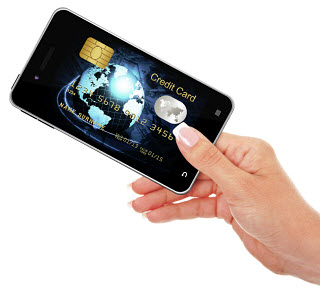An Australian financial institution has launched a mobile payments service for consumers.
Bendigo Bank, in partnership with Samsung Electronics Australia and Community Telco Australia, an Adelaide Bank telecommunication subsidiary, has released a retail point of sale (POS) mobile payment solution called “redy”, which gives consumers the capability of making a payment and even donating to a local charity by scanning unique QR codes.
Customers can make payments via their Apple or Android mobile devices.
To make a payment, consumers must first download the redy app, which is required in order to be able to scan the quick response code that is displayed on the Samsung redy tablet located at the POS. Bendigo Bank patrons can connect the redy app directly to their savings account. Those who are not clients of the financial institution can link the app to their MasterCard or Visa account.
To help ensure the security of customers, every QR code is uniquely and automatically generated by Bendigo Bank’s system each time a new transaction is processed. In addition, the receipts from transactions remain on the app, so the customer’s personal data and shopping information is not distributed to the merchant.
Furthermore, redy is not only an efficient shopping service. In addition to enabling customers to make convenient purchases, it also rewards them with “creds”. This is a virtual currency that consumers earn in real time. The value of “creds” received per transaction is half a percent of each transaction. Customers can use this virtual money in more than one way. They can save the currency and use it at a later time to make purchases with businesses that support the redy service. They may also donate “creds” to a local initiative or charity.
QR codes seemed like a more logical solution to NFC Technology.
According to David Joss, CEO of Community Telco Australia, Bendigo Bank chose QR codes over near field communication (NFC) technology or Bluetooth low energy technology due to the fact that QRcodes can be scanned by all mobile devices, which allows more mobile users to benefit from the service. Not every smartphone on the market is equipped with the necessary tech to support NFC or Bluetooth. This makes the app more open.
Retailers are flocking to mobile commerce more quickly than consumers are in Australia
Australian retailers are adopting mobile payments faster than consumers, according to Vend, a New Zealand vendor that develops point-of-sale tools for traditional retail stores. Consumers have been showing relatively strong interest in the concept of mobile commerce, but only a modest amount of these people have actually begun participating in mobile shopping. Retailers, however, have been aggressive in their adoption of mobile commerce, hoping to engage a consumer base that is becoming more mobile-centric.
Retail sector continues to aggressively adapt to changes in the business landscape
Australia’s retail sector has always been somewhat ahead when it comes to matters of commerce. Retailers in the country are often quick to adopt new technology that allows them to better engage consumers in a dynamic way. The problem, however, is that consumers are not as enthusiastic when it comes to some of the moves that retailers are making. Mobile commerce is still relatively new and while retailers have high hopes for the mobile space, many consumers are wary of the threats that exist therein.
Consumers are still wary of mobile commerce and its security issues
 Many people have cited security issues as their reason for not participating in mobile commerce. Because mobile commerce involves the trafficking of financial information over mobile platforms, this sector has become particularly attractive to malicious groups that would be interested in exploiting this financial information. In Australia, consumers are more apt to favor traditional forms of payment rather than mobile forms. Part of this mentality may be due to poor experiences that consumers may have had with mobile commerce platforms in the past.
Many people have cited security issues as their reason for not participating in mobile commerce. Because mobile commerce involves the trafficking of financial information over mobile platforms, this sector has become particularly attractive to malicious groups that would be interested in exploiting this financial information. In Australia, consumers are more apt to favor traditional forms of payment rather than mobile forms. Part of this mentality may be due to poor experiences that consumers may have had with mobile commerce platforms in the past.
Many consumers are comfortable with traditional payment methods and have had bad experiences with mobile commerce platforms
Changing consumer behavior is not likely to be an easy feat. Retailers have been promoting mobile payments for some time but have found relatively little traction. Consumers have become quite comfortable with the way they shop and pay for products. New forms of payments can make some people uncomfortable and unwilling to use mobile platforms while shopping. Poorly designed mobile commerce platforms can also have an adverse effect on people’s opinions concerning mobile commerce.


 Many people have cited security issues as their reason for not participating in
Many people have cited security issues as their reason for not participating in 